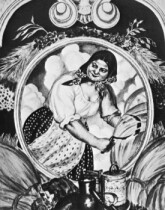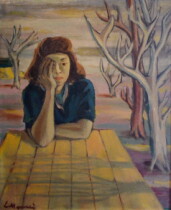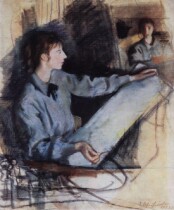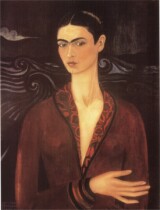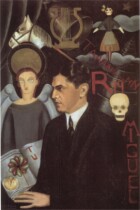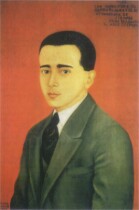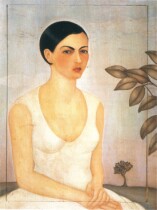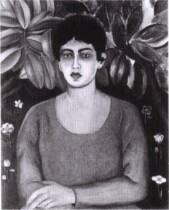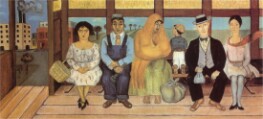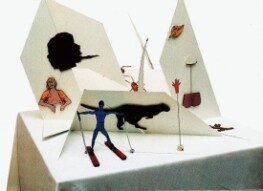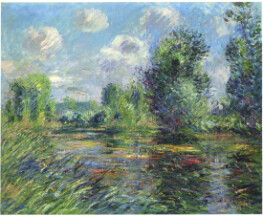What the Water Gave Me
In this painting, most of Kahlo's body is obscured from view. We are unusually confronted with the foot and plug end of the bath, and with focus placed on the artist's feet. Furthermore, Kahlo adopts a birds-eye view and looks down on the water from above. Within the water, Kahlo paints an alternative self-portrait, one in which the more traditional facial portrait has been replaced by an array of symbols and recurring motifs. The artist includes portraits of her parents, a traditional Tehuana dress, a perforated shell, a dead hummingbird, two female lovers, a skeleton, a crumbling skyscraper, a ship set sail, and a woman drowning. This painting was featured in Breton's 1938 book on Surrealism and Painting and Hayden Herrera, in her biography of Kahlo, mentions that the artist herself considered this work to have a special importance. Recalling the tapestry style painting of Northern Renaissance masters, Hieronymus Bosch and Pieter Bruegel the Elder, the figures and objects floating in the water of Kahlo's painting create an at once fantastic and real landscape of memory.
Kahlo discussed What the Water Gave Me with the Manhattan gallery owner Julien Levy, and suggested that it was a sad piece that mourned the loss of her childhood. Perhaps the strangled figure at the center is representative of the inner emotional torments experienced by Kahlo herself. It is clear from the conversation that the artist had with Levy, that Kahlo was aware of the philosophical implications of her work. In an interview with Herrera, Levy recalls, in 'a long philosophical discourse, Kahlo talked about the perspective of herself that is shown in this painting'. He further relays that 'her idea was about the image of yourself that you have because you do not see your head. The head is something that is looking but is not seen. It is what one carries around to look at life with.' The artist's head in What the Water Gave Me is thus appropriately replaced by the interior thoughts that occupy her mind. As well as inclusion of death by strangulation in the center of the water, there is also a labia-like flower and a cluster of pubic hair painted between Kahlo's legs. The work is quite sexual while also showing a preoccupation with destruction and death. The motif of the bathtub in art is one that has been popular since Jacques-Louis David's The Death of Marat (1793), and was later taken up many different personalities such as Francesca Woodman and Tracey Emin.

